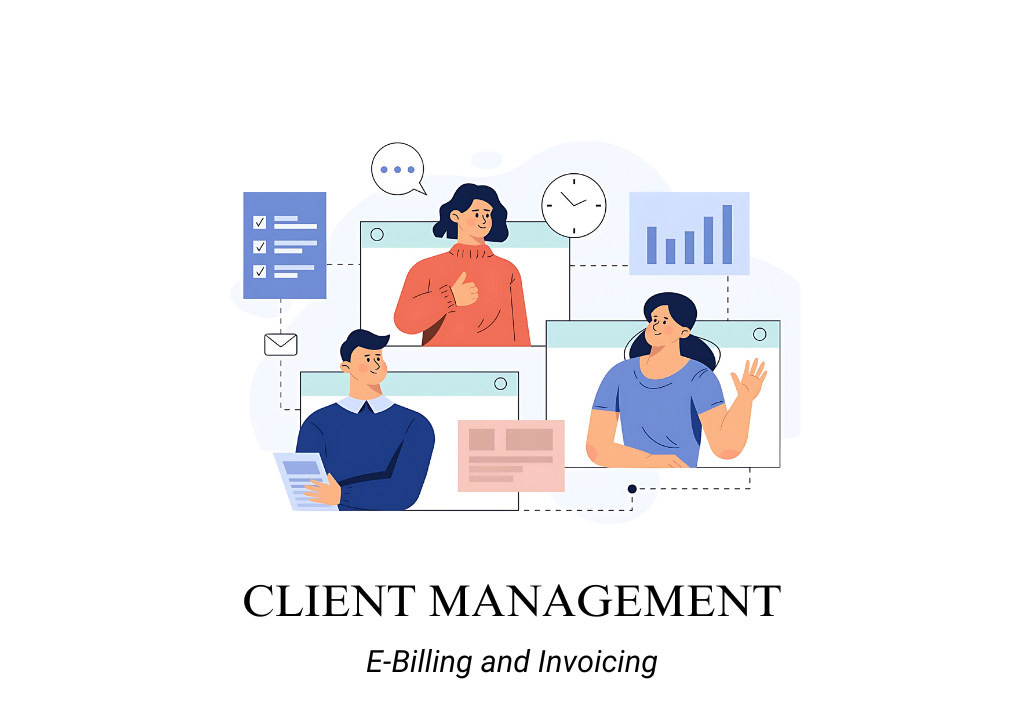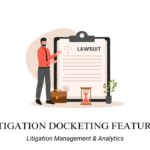Introduction
Client management is a core functionality within legal practice management and billing systems, focusing on the systematic handling of all client-related activities, data, and communications. It encompasses everything from storing contact information and case histories to managing billing and payment processes. For law firms, enterprises, individual practitioners, and in-house legal departments, client management ensures that client interactions are efficient, well-documented, and easily accessible. This functionality serves as the backbone for maintaining and nurturing client relationships, providing a comprehensive overview of each client’s status, history, and needs.
Purpose
The primary purpose of client management is to streamline the way legal professionals interact with their clients. By centralizing all client-related information and processes, it helps in managing client expectations, delivering personalized services, and ensuring that all communications are timely and relevant. Efficient client management also allows legal professionals to provide consistent service, thereby enhancing client satisfaction and loyalty. It plays a crucial role in ensuring that no detail is overlooked, from the initial client onboarding to ongoing case management and billing, which is particularly important for law firms, enterprises, and government legal departments handling multiple clients and cases simultaneously.
Benefits
- Centralized Data Management: A key benefit of client management is the centralization of all client data in one accessible location. This means that legal teams can quickly retrieve any necessary information, whether it’s contact details, case notes, or billing history, without having to search through disparate systems. This centralization also improves data accuracy, as all updates are reflected across the entire system in real-time.
- Improved Communication and Client Relations: Effective client management ensures that all communications with clients are consistent, clear, and well-documented. This not only enhances the client experience but also ensures that the legal team can refer back to previous communications, reducing the risk of miscommunication or missed information.
- Enhanced Efficiency: By streamlining client-related processes, client management functionality reduces administrative burdens. This allows legal professionals to focus more on providing strategic legal advice rather than getting bogged down in paperwork and data management.
- Compliance and Security: Client management systems often include features to ensure compliance with legal and regulatory requirements related to data management and privacy. This is critical in legal environments where the mishandling of client information can lead to severe legal repercussions.
- Better Client Satisfaction and Retention: By providing a seamless and professional experience, client management helps in building long-term relationships with clients. Satisfied clients are more likely to return for future legal services and to refer others, contributing to the firm’s growth and reputation.
Features
Central Client Repository
- Meaning: A central client repository is a feature that allows all client-related information to be stored, organized, and accessed from a single, unified database. This includes contact information, case details, billing records, communication logs, and any other relevant data. The repository acts as the main hub where all client data is consolidated, ensuring that legal professionals have a complete and up-to-date overview of their clients at all times.
- Purpose: The central client repository is designed to provide quick and easy access to comprehensive client information, making it easier for legal teams to manage client relationships and casework. By having all information in one place, legal professionals can quickly respond to client inquiries, prepare for meetings, and ensure that they have all the necessary context to provide informed advice. This feature also supports better decision-making, as it allows legal teams to view the entire history and status of a client’s relationship with the firm.
- Use Cases:
- Law Firm Case Management: A law firm uses a central client repository to manage all information related to its clients. This includes storing detailed case histories, tracking ongoing legal matters, and managing billing and payment records. When a client calls with a question about their case, the attorney can quickly access the relevant information, providing informed and timely responses.
- In-House Legal Department: An in-house legal department within a corporation uses a central client repository to manage relationships with external law firms and internal stakeholders. The repository helps the legal team keep track of all ongoing legal issues, communications, and contracts, ensuring that nothing falls through the cracks.
- Government Legal Office: A government legal office uses a central client repository to manage its interactions with various departments and external legal counsel. This centralized approach ensures that all client-related information is easily accessible and that the office can respond efficiently to requests for legal advice or information
Client Communications
- Meaning: Client communications is a feature that enables the systematic tracking and management of all interactions with clients. This includes emails, phone calls, meetings, and any other forms of communication. The feature ensures that all interactions are documented and stored within the client management system, allowing legal professionals to reference past communications, follow up on outstanding issues, and ensure that all client interactions are professional and timely.
- Purpose: The purpose of client communications is to maintain a detailed and organized record of all interactions with clients. This not only helps in providing better service by ensuring continuity and consistency in communication but also serves as a valuable resource for legal professionals who need to review past interactions or prepare for upcoming meetings. This feature is particularly useful for law firms and legal departments handling multiple clients and complex cases, where keeping track of communications is essential for effective case management.
- Use Cases:
- Client Interaction Tracking: A law firm tracks all client interactions, including phone calls, emails, and meetings, using the client communications feature. This ensures that the legal team is always aware of the latest developments in a client’s case and can provide consistent and informed advice.
- Legal Department Communication Management: An in-house legal team uses the client communications feature to manage its interactions with external law firms and internal business units. The feature ensures that all communications are documented and easily accessible, allowing the team to manage multiple cases and stakeholders efficiently.
- Client Relationship Management: A legal consultant uses the client communications feature to keep track of all interactions with their clients. This helps the consultant maintain strong relationships with clients by ensuring that all communications are timely and relevant.
Billing Schedules
- Meaning: Billing schedules are predefined timelines and structures for generating and sending invoices to clients. This feature allows legal professionals to automate the billing process, ensuring that invoices are issued regularly and consistently, based on the agreed-upon terms with the client. Billing schedules can be customized to fit the specific needs of the firm or client, including monthly, quarterly, or milestone-based billing.
- Purpose: The purpose of billing schedules is to streamline and automate the invoicing process, reducing the administrative burden on legal professionals and ensuring that clients are billed accurately and on time. By automating the billing process, legal teams can focus more on providing legal services and less on managing the financial aspects of client relationships. This feature is particularly valuable for firms and legal departments that handle multiple clients and complex billing arrangements, where manual invoicing would be time-consuming and prone to errors.
- Use Cases:
- Automated Invoicing for Legal Services: A law firm sets up billing schedules to automatically generate and send invoices to clients on a monthly basis. This ensures that clients are billed regularly and that the firm’s cash flow remains consistent.
- Milestone-Based Billing: A legal department working on a large project sets up a billing schedule based on project milestones. Invoices are automatically generated and sent to the client as each milestone is completed, ensuring that the department is paid promptly for its work.
- Retainer Billing: A solo practitioner uses billing schedules to manage retainer agreements with clients. The feature automatically bills clients at the beginning of each month, ensuring that the practitioner receives payment upfront for their services.
Payment Processing
- Meaning: Payment processing is a feature that handles the management of payments received from clients, including the processing of various payment methods, tracking of payment status, and reconciliation of payments with invoices. This feature ensures that payments are handled efficiently and accurately, reducing the administrative burden on legal professionals and improving cash flow management.
- Purpose: The purpose of payment processing is to ensure that payments are processed quickly and accurately, reducing the risk of errors and ensuring that the firm’s financial records are up-to-date. By automating the payment process, legal professionals can focus more on providing legal services and less on managing the financial aspects of their practice. This feature is particularly useful for firms and legal departments that handle a high volume of transactions, as it helps to streamline the payment process and reduce the risk of errors.
- Use Cases:
- Automated Payment Processing: A law firm uses the payment processing feature to automatically process payments received from clients, including credit card payments and bank transfers. This ensures that payments are processed quickly and accurately, reducing the risk of errors and improving cash flow management.
- Payment Reconciliation: An in-house legal team uses the payment processing feature to reconcile payments received from clients with outstanding invoices. This ensures that all payments are accounted for and that the team’s financial records are up-to-date.
- Multiple Payment Methods: A legal consultant uses the payment processing feature to accept payments from clients through various methods, including credit cards, PayPal, and bank transfers. The feature ensures that payments are processed quickly and accurately, reducing the administrative burden on the consultant
Conclusion
These features collectively enhance the client management capabilities of legal practice management and billing systems, ensuring that client interactions are efficient, well-documented, and easily accessible. This enables legal professionals to provide better, more personalized service, maintain strong client relationships, and manage the financial aspects of their practice more effectively.
Guide to find best E-Billing & Invoicing tools for lawyers
CHECK OUT INVOICING & BILLING TOOLS ON DIRECTORY OR CLICK HERE


